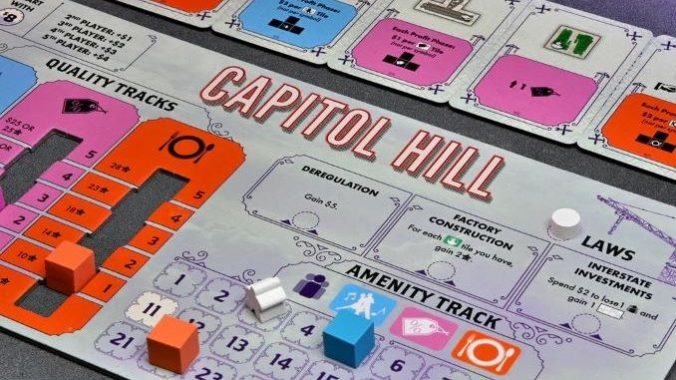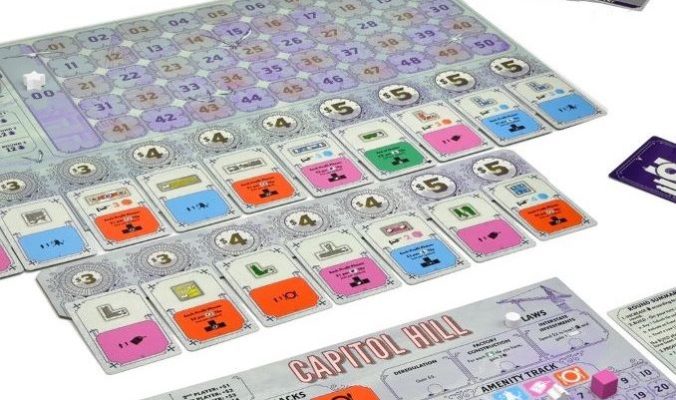Rebuilding Seattle Proves that Economic Board Games Don’t Have to Be Too Convoluted

When I first saw the game Rebuilding Seattle at PAX Unplugged last December, I assumed it was a futuristic game based on the earthquake that might obliterate the Pacific northwest in the next few decades. I was wrong, as usual, as the game actually takes its theme from the Great Seattle Fire of 1889, and asks players each to build up a neighborhood in the city, combining tile-laying and engine-building mechanics for a very Euro-style game experience that plays quite a bit faster than I first expected.
The heart of Rebuilding Seattle, which plays two to five players and has a solo mode included, is the game’s assortment of buildings, which come in six colors of polyomino tiles and range in size from one to four squares. Players start with one neighborhood tile that has some buildings preprinted on it, and over the course of three rounds, they’ll buy various buildings to cover that tile and additional suburb tiles they’ll buy or gain to expand their neighborhood, while also using the game’s six Events in each round and passing Laws for one-time benefits.
The vast majority of your turns in Rebuilding Seattle will involve buying a building, and maybe also buying a suburb tile to expand your neighborhood so you can place more buildings. Suburb tiles cost $4, and regular buildings cost $3-5. You can buy a building card from the central market, which varies in size by player count, and then take the building tile shown on the top half of the card while also getting some kind of benefit shown on the bottom half of the card. Some of these are immediate bonuses, like moving up one of the three scoring tracks on your personal board, while others are end-of-round or end-game bonuses of points or money. The spaces at the ends of the market also have preprinted buildings on them that you can buy once players have bought the cards on top of them, gaining the building tile but no additional benefit. Each player also begins the game with two Landmark cards and tiles, which cost about $15 to build and bring larger rewards, again varying from immediate to end-game.
Three of the six building colors provide you with the bulk of the victory points you’ll accumulate during the game, representing entertainment, shopping, and dining. In each of the three rounds, an event will trigger scoring for each of those three building types. You’ll gain points and/or money based on how many of that type’s symbols you have anywhere in your neighborhood and how far you’ve moved up the track for that type. There’s a very interesting catch, however: When an event triggers scoring for one of these building types, you have to see if you have more of that symbol than you have people in your neighborhood. Your population starts at 11 and increases by 12 at the start of the second and third rounds, with various ways to decrease your population as the game goes on. If you have more dining symbols than people when the dining event is triggered, you get the full benefit. If your population is higher, however, you subtract the difference from whatever bonus you would have gotten, maybe all the way to zero.

-

-

-

-

-

-

-

-

-

-

-

-

-

-

-

-

-

-

-

-

-

-

-

-

-

-

-

-

-

-

-

-

-

-

-

-

-

-

-

-








































